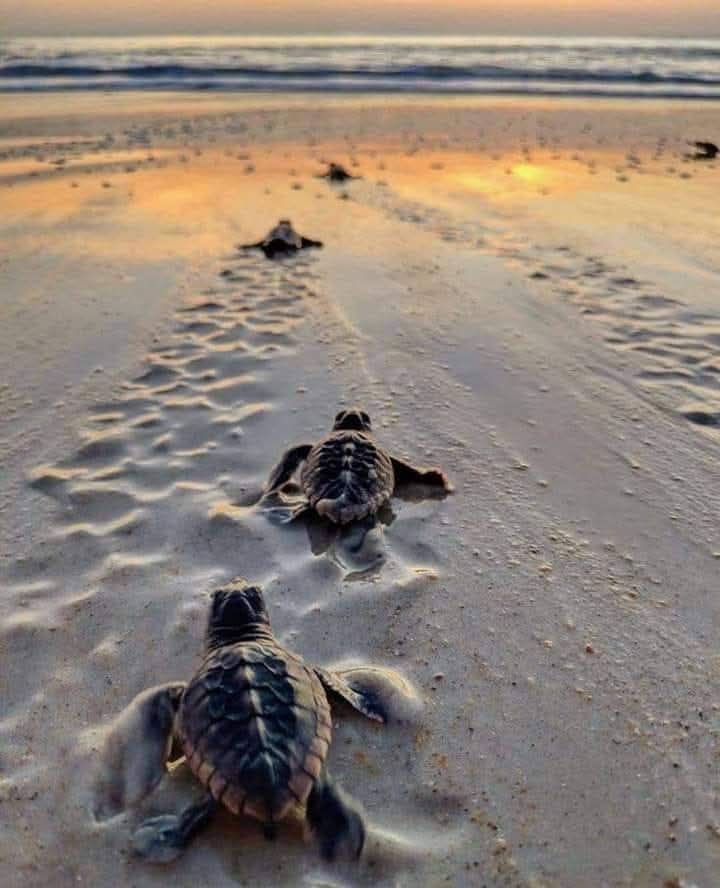Imagine this: You're standing barefoot on a warm beach under a velvet sky, watching dozens of baby sea turtles make their first dash to the ocean while above, a meteor shower lights up the night. This isn’t a dream — it’s something you can actually experience in a few select coastal destinations around the world.
When and Where to See Sea Turtle Hatchings
Sea turtle hatching season typically falls between July and October, with peak hatching in August in many regions. During this time, hatchlings emerge from their nests under cover of darkness, guided by the moonlight to the sea.
Top places to witness hatchings:
• Tortuguero, Costa Rica – Known as one of the world's most important nesting sites for green turtles.
• Juno Beach, Florida, USA – Home to the Loggerhead Marinelife Center and prime loggerhead nesting territory.
• Ostional Wildlife Refuge, Costa Rica – Famous for "arribadas," or mass nesting events by olive ridley turtles.
• Ras Al Jinz, Oman – Where green turtles nest year-round.
• Rekawa Beach, Sri Lanka – Known for five different species of sea turtles nesting.
Perseid Meteor Shower Timing
The Perseids are one of the brightest and most active meteor showers of the year, peaking around August 11–13. They’re best viewed from locations with low light pollution and clear skies — often the exact same places where sea turtles hatch.
Best Places to See Both
To catch both the turtle hatchings and meteor shower, look for:
• Remote, dark-sky beaches in Costa Rica, Florida, or Sri Lanka
• Turtle conservation tours that include night walks
• Locations with eco-lodges that minimize light pollution
Top pick: Tortuguero National Park, Costa Rica — August is prime for both green turtle hatchings and dark, tropical skies ideal for meteor viewing.
Fascinating Sea Turtle Facts
• Female sea turtles return to the same beach where they were born to lay eggs.
• Only 1 in 1,000 hatchlings survives to adulthood.
• Sea turtles have been around for over 100 million years — since the time of the dinosaurs.
• They can migrate thousands of miles, navigating using Earth’s magnetic field.
• Some species, like the leatherback, can dive over 3,000 feet deep!
Travel Tips for the Best Experience
• Book a guided tour with licensed wildlife experts to avoid disturbing turtles.
• Avoid artificial lights and flash photography on the beach — it disorients hatchlings.
• Bring a red flashlight, which is turtle-safe.
• For meteors, allow your eyes 20–30 minutes to adjust to the dark.
• Bring a blanket or reclining chair, and look up between midnight and dawn.
Eco-Friendly Reminders
• Never touch or handle sea turtles or hatchlings.
• Stay at least 20 feet away during a hatching event.
• Support local conservation organizations and eco-tourism initiatives.
Combine Nature’s Best Show: Sea Turtles + Shooting Stars
There are few natural events as humbling and awe-inspiring as watching ancient marine life begin its journey just as celestial fireworks light up the sky. Whether you’re a wildlife lover, a stargazer, or just someone seeking a magical travel moment, this August offers the perfect time to see two natural wonders collide.
#SeaTurtleHatchings #PerseidMeteorShower #EcoTravel #WildlifeWonders #TurtleSeason #DarkSkyBeaches #Stargazing #NatureLovers #CostaRicaTravel #ConservationTravel #TurtleTour #MeteorWatch
Photo: Richard Gasquet, Sanibel Island
|
|

